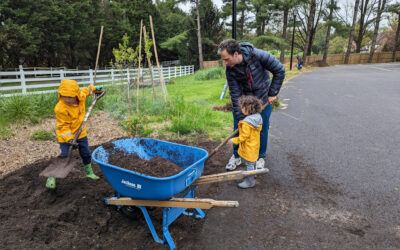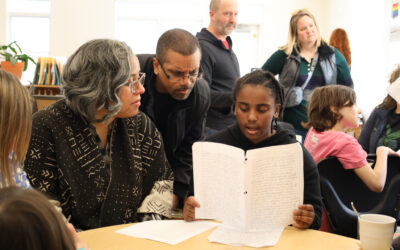Written by Marketa Traband, Children’s House Guide
“In our work, therefore, we have given a name to this part of the mind which is built up by exactitude, we call it the ‘mathematical mind.’”
– Dr. Maria Montessori, The Absorbent Mind
Maria Montessori’s use of the term, ‘The Mathematical Mind,’ refers to the unique tendencies of the human mind, such as order, exactness, exploration, and orientation. Humans also have the unique abilities to imagine, create, and think abstractly. Montessori designed her math materials to incorporate the natural capabilities of a child’s mathematical mind.
All children have mathematical tendencies, and all children should be able to enjoy mathematical studies. Dr. Montessori proposed that the introduction of mathematics during the period of the absorbent mind (0-6 years) enables the child to form positive associations with numbers, which can be carried on throughout life. The key is to provide the child with hands-on experiences. For the young child, an explanation is not enough. Dr. Montessori wrote: “Education is a natural process carried out by the child and is not acquired by listening to words but by experiences in the environment.” Montessori demonstrated that if a child has access to concrete mathematical materials in his early years, she can come to her own understanding of abstraction concerning the concept. On the other hand, these same skills and facts may require long hours of laborious work if introduced later in abstract forms or simply asked to memorize.
To make a mathematical abstraction, the child must have a prepared foundation of experiences of order, sequence, and sensorial experience of things around her. So it is no accident that the basic materials of the Sensorial apparatus are based on the quantity of ten. Likewise, the area of Practical Life nurtures the mathematical mind of the child through its precision and order. Many materials in the Montessori environment have indirect aims that contribute to the development of the mathematical mind.
At a certain point in development, usually around the age of four, the child enters the sensitive period for numbers, and the child’s mathematical nature awakens. She graduates from purely sensorial explorations to interest in specific measuring and counting. Once begun, the child progresses through the math materials sequentially. The first group of exercises is work with numbers 1 to 10. The child learns the quantities from 1 to 10 through a very concrete experience with the number rods. After this, we introduce symbols and the child learns to associate quantity and symbol with the number rods and cards. The sandpaper numbers isolate the symbols for the quantities, and tracing them prepares the hand for writing numerals. With the spindle boxes, we are introducing zero as a concept and the child learns to isolate symbols and quantities – zero through 9.
With Cards and Counters, the child lays out the cards and the counters in a particular way. This work is also an introductory of odd and even numbers. With the Memory game, the child relates what she knows about numbers 0-10 to the environment.
These exercises give the child experience allowing for variety and repetition. The presentation of The Golden Beads gives a visual and a very concrete experience of the decimal system. We begin with units, then tens, hundreds and thousands. It all begins with quantity and then the child is given the symbols. Later the child is putting quantity and symbol together. Following are the four operations; addition, subtraction, multiplication and division.
The Teens and Tens work isolates the linear aspects of the decimal system. The child learns the terminology of individual numbers and how to count and recognize numbers from one to 1000 and beyond.
The memory work contains exercises designed to give the child an understanding and the acts necessary to work with the material in abstract terms. The child is given lessons to support her work with addition, subtraction, multiplication and division in totally abstract terms.
One of the last math apparatus used in the primary class are fractions. This is a transitional material from primary to elementary.
During the sensitive period for numbers, the hands-on Montessori materials allow the child to form concrete impressions of the world of mathematics. This in turn, allows her to experience mathematics with positive associations and allow a child to experience the satisfaction of learning through self-discovery. The learning, therefore, is truly the child’s own and cultivates a lifelong love of learning!
Learn more about the Greenspring Montessori School Children’s House Program.












